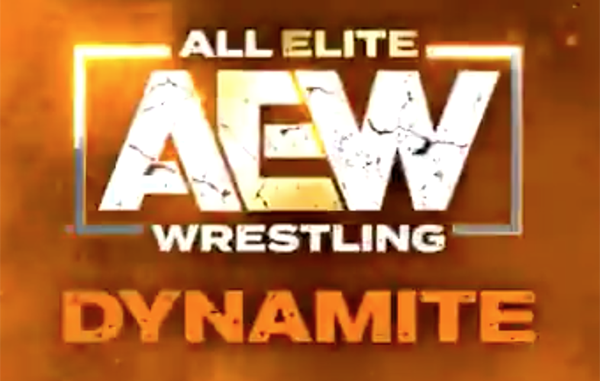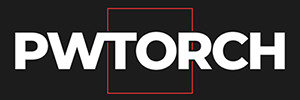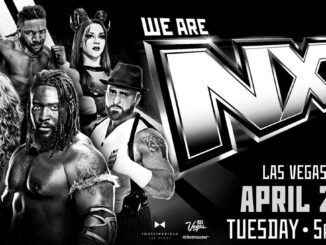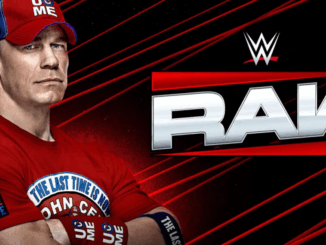
SPOTLIGHTED PODCAST ALERT (YOUR ARTICLE BEGINS A FEW INCHES DOWN)...
All Elite Wrestling’s Dynamite weekly series debuts tonight on TNT and TSN, but the channel that the promotion actually made its broadcast debut with hype specials for Double or Nothing was conspicuous by its absence. Britain’s ITV has elected to not show the program live. That has provoked a week-long controversy that had a rare happy ending.
The Landscape
For the unfamiliar, it’s worth just quickly outlining the British television landscape. Britain has five major networks (BBC1, BB2, ITV, Channel 4, and Channel 5), which are the equivalents of the big American networks. These are also made available in the Republic of Ireland, due to reciprocal arrangement where Irish stations are made available in Northern Ireland. There are then Free-to-Air digital stations such as BBC4 or ITV2 that are akin to basic cable stations, although with much smaller budgets to lack of transmission fees. There are then pay-TV platforms such as SKY and BT which offer a broader range of stations, including premium sports channels.
The Television Deal
The channels that AEW will be broadcast on are ITV1 and ITV4. These are indeed stronger platforms than the television channels that currently air WWE, Impact, or Major League Wrestling. We can see this by looking at the percentage share of the total television audience each channel receives:
|
Channel’s Share of Total Viewing Audience in August as measured by BARB (BBC1 first with 19.20) |
||
| Channel | Promotion | % Share |
| ITV1 | AEW | 15.34 |
| ITV4 | AEW | 1.07 |
| 5STAR | IMPACT | 0.61 |
| Freesports | MLW | 0.09 |
| Sky Sports | WWE | 0.10 (Arena) to 1.42 (Main Event) |
| BT Sports | WWE from 2020 | 0.26 |
Here we see that other than the relatively rare occasions when SKY Sports puts WWE on its prestige Main Event channel as opposed to Arena or Action, no other pro wrestling promotion comes close to being featured on a station as strong as ITV4 let alone ITV1.
So why was there such initial negativity from British fans? Well the issue was the timeslots.
As it stood until earlier today, ITV was only going to broadcast Dynamite to British viewers on ITV4 early Sunday mornings (the first screening is due for 8:20 a.m.) and then air a highlights package to British and Irish viewers on ITV late on Monday night (the first screening is due for 11.45 p.m.). Based on how ITV treats Sunday morning or Monday night programming, it’s reasonable to expect these timings to slightly shift from week to week, depending on what programming ITV wants to put on beforehand.
It’s hard to convey to people outside Britain and Ireland how substandard these timeslots are. The primary issue with the Sunday morning timeslot is that it is before the “watershed,” i.e. the time after which adult content can be shown on British television. Even today’s WWE when aired before the watershed is heavily edited, with cuts to the crowd if weapons are used, and any perceived vulgarity edited off. When ITV produced their own wrestling programming in World of Sport, they couldn’t show a single shot of the ladder being used as a weapon in a ladder match. Given that AEW is promising to produce something that is edgier than today’s WWE, it’s hard to see how Dynamite escapes without significant and intrusive edits. Remember, this is the only broadcast of the full program currently scheduled. Even without the problem caused by editing, it’s a poor timeslot on a channel that has never made weekend morning programming a priority. For example last Sunday morning, ITV filled the time with repeats of two programs about fishing.
This is equally true for late night on a Monday. When talking to Wade Keller about the British and Irish TV deal, Tony Khan invited people to imagine if Jimmy Fallon only did his monologue on NBC before throwing to Dynamite, and how massive that would be for the promotion. That indeed would be massive. But nothing of the sort is happening. Britain does not have a tradition of late night television. Indeed, when Johnny Carson and David Letterman were entertaining Americans before bedtime in the ’80s, British television channels were literally ceasing all programming by 12.30 a.m. Well into the ’90s, channels would put up a test card (a static image of a creepy clown and girl), Ceefax (proto-internet of text articles you could access through your television), or forthcoming programming information rather than bother with the hassle of late-night or early-morning programming. For ITV, it’s now primarily the preserve of repeats or sporting highlight programs. The obvious exceptions have been Fridays and Saturdays, where late night programming aimed at people coming back from nights out, or having a session in doors, have long been a staple.
Luckily for AEW, the situation has significantly changed with ITV’s follow up announcement. Now fans will be able to access the full show on ITV’s video-on-demand service from 7 p.m. on Thursday. And there will now be a Friday airing on ITV4 at 11:20 p.m. It’s a package that will appease all but the hardest of hardcore fans, with access within 24 hours for those willing to watch online. And a Friday night airing at a time that will not only allow it to be aired unedited, but is perfectly positioned to capture fans returning home from a night out, and also act as a lead-in to those waiting for the live-airing of Smackdown to start. The big loser may well be Impact which, unless it moves its timeslot, will now find itself running almost entirely head-to-head against a hotter pro wrestling product on a bigger statement.
Can’t Be Bothered vs. Impossible
As Tony Khan outlined on the Wade Keller Pro Wrestling Podcast this week, the announcement of AEW’s television deal in Britain and Ireland went off half-cocked, when a scheduler shared news of the screenings on his personal Twitter. A hastily-prepared press released followed, with Khan adding to it on his Twitter and media briefings. The key message coming from AEW was that they really wanted to do a live screening on ITV but it wasn’t possible due to regulations concerning advertising. These issues can be summarised as follows:
- American television has more minutes of advertising than is legally permitted in Britain
- American television has more frequent advertising breaks than is legally permitted in Britain
These are both broadly true. British television has fewer ads and less frequent advertising breaks than American television. However, the regulations contain very clear workarounds/loopholes to ensure that programming such as Dynamite could be aired. The first is that house ads for the station do not count towards the total minutes of adverts shown during a program. The second is that if you are picking up a feed from an overseas broadcasting, you can legally follow their ad breaks schedule. In his interview with Wade Keller, Khan seemed to have accepted the truth of the first point but not of the second.
What this means in practice is that Dynamite could air live, but that for much of its ad breaks you’d be seeing ads for Dynamite or other ITV programming. To be clear; this does not require the program to be edited. It just requires somebody awake in ITV HQ to press play on the prepared advertisements when TNT goes on a break. The editing comes when you get to repeat broadcasts, where some commercials won’t be replicated, and additional content may be added in to ensure the program hits a standard run time (repeats of Smackdown, for example, usually has a retro match added).
This was instinctively known to any UK pro-wrestling fan, because this is exactly the approach that Sky takes when airing Raw or Smackdown. There was an attempt to suggest that what Sky does wouldn’t be possible on ITV1 or ITV4 because Sky isn’t regulated in the same way. This also isn’t true. All stations other than the BBC are regulated by Ofcom (Office for Communications), with both ITV and SKY needing an Ofcom licence to broadcast. The one difference is that ITV1 and its variants in Scotland (STV) and Northern Ireland (UTV) can show even fewer minutes of adverts than ITV4 or Sky Sports.
It’s still not clear why Tony Khan put out on his personal Twitter, or briefed journalists, that Ofcom regulations made it impossible for a Dynamite to be shown live on ITV. He says he is repeating what ITV told him. It is more than plausible that he was spun this by an ITV exec that simply didn’t want to go to the expense and effort of a weekly live broadcast. If that was the case, one wonders what due diligence Khan is conducting in these negotiations, given ITV’s track record of disappointing promoters.
Now it has to be stressed that ITV’s position is a reasonable one to take, as there really is an argument that the cost of organizing a live streaming isn’t worth the extra viewers you’ll bring in. But nor should anyone be under any illusions, that not having a live broadcast on ITV, will mean a significant number of AEW fans will be lost to alternative distribution methods (both legal and illegal). When MLW went live on FreeSports for the first time, they managed to nearly treble their audience. This is partially because of the people who wanted to watch it live, but also people who want to watch at their convenience having woken up, rather than wait for a repeat broadcast (standard BARB audience figures capture catch-up viewing within the week of transmission).
But fundamentally the issue has much less importance today, with ITV Wrestling’s supplementary announcement.
Enter FITE
At the same time as they announced the British and Irish television deal, they also announced that both markets, along with most others across the world, could gain access to live broadcasts of Dynamite through FITE’s new AEW+ subscription service. As many have pointed out, the $5 is a not unreasonable amount for eight hours of live content every month, although it does pale into comparison with the amount of content provided by the WWE Network or New Japan World. It will also raise interesting questions about how willing overseas fans will be to pay for the smaller BR Live specials that were made available internationally through pay-per-view over the summer. It’s also likely that today’s announcement has significantly undermined interest amongst British fans for purchasing the service.
There was an interesting coda to the story of AEW+ on Monday, when BackBodyDrop’s Ian Hamilton noted that the new service was falling foul of the EU’s Single Digital Market initiative. The European Union, in its role of encouraging cross-border trade and travel, last year passed a law that prevented online content services from blocking people from accessing content when travelling throughout the EU. This now means, that in theory, a British person travelling to Germany, should be able to access any digital content that they purchased in Britain. Unfortunately for AEW, lots of British and Irish pro wrestling fans are traveling to Germany this week for WXW’s Tag Team Festival, and Germany is the one EU country that currently doesn’t have AEW+. FITE confirmed to Hamilton that they intended to stop him accessing AEW+ whilst he was in Germany, in clear contravention of the law. When it rains, it pours…
Conclusions
The temptation is to say that all’s well that ends well. And certainly, whilst they took the long way round, AEW have made good on Cody Rhodes’s boasting at Starrcast, as AEW really does have a better television deal in the UK than WWE based on the exposure it will bring the product (one, however, assumes that even BT Sports will be paying more the programming than ITV). But it’s worth the promotion learning the lessons of this week’s missteps.
Firstly, there was a failure to manage expectations that led people to expect that not only would AEW get onto a stronger station than WWE but that it would be easy to secure premiere timeslots. I wasn’t alone in being told repeatedly by AEW fans that the AEW/ITV deal was signed and sealed as far back as June. Likewise they failed to properly manage the fallout from the initial disappointment, stuck between saying the deal was great, and saying they were working to improve it. That suggests the common refrain that the promotion would benefit from working with a professional P.R. agency is true.
Likewise, the issues surrounding Tony Khan seemingly not understanding British broadcast regulations whilst negotiating with ITV and FITE not understanding EU regulations whilst selling a subscription service, suggests that they desperately need to bring in experts in these fields. One wonders what other gremlins may emerge from television deals that have been negotiated by overstretched executives who are new to this business.
But most importantly, what is left is a genuine mystery about what ITV feels about the product. The refusal to broadcast the program live, and the initial reluctance to broadcast it at a reasonable time, suggest that there ITV is not 100 percent committed to pro-wrestling. That would be typical of the station. In the past, they’ve happily worked with combat sports promotions when cheap content was on offer, or when there was a chance to make money off pay per views. But ITV have repeatedly failed to invest the effort or expense to grow the brand of fighters or promotions they work with. AEW now have the platform to take the fight to WWE, but they should be under no illusions that it’ll be them who have to put in the hard yards of promoting the shows and building the brand.




Leave a Reply
You must be logged in to post a comment.